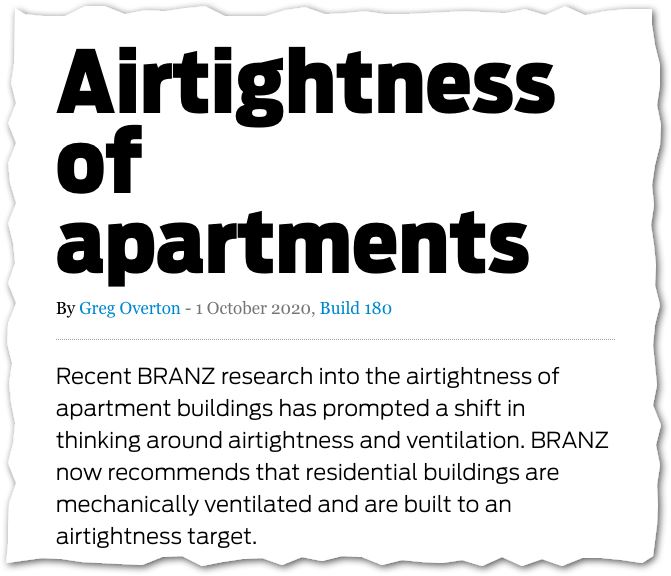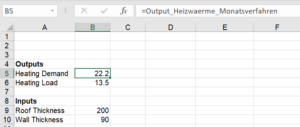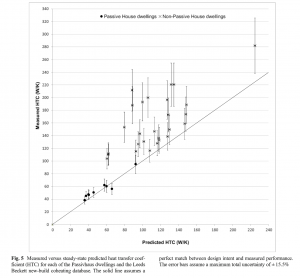Advances Toward a Net-Zero Global Building Sector is a BIG tech paper, happily published with open access so people outside of academic institutions can actually read it. See below for the abstract and a link to the paper. New Zealand is well represented in the paper’s database due to our Passive House buildings. The following items are worth paying particular …
Retrofit alert: know when fire-rated components are called for

Fire rating of the building/windows is not something we usually need to worry about in new, detached single-family homes, as the clearance to the property boundaries is sufficient. But during retrofits—especially ones that involve a change of use—fire regulations can have a big impact. It’s best to avoid the need for fire-rated windows as they are big money and poor …
Local MVHR only 40% efficient, says BRANZ test
We go to great lengths to maintain the certified level of MVHR efficiency in the high-performance building projects we consult on. We recommend or specify cross-counter flow heat exchangers with well insulated boxes, short exterior air ducts (also well insulated) and semi-rigid or rigid distribution ducting inside the thermal envelope; with all that, projects often achieve 80-90% overall efficiency (ie …
BRANZ sees the light on mechanical ventilation

Holy sh*t. Talk about a big shift in perspective. Let’s repeat that: “BRANZ now recommends that residential buildings are mechanically ventilated and are built to an airtightness target.” This comes from an article in the Oct 2020 edition of Build magazine, available online. In it, Senior Building Performance Engineer Greg Overton says “the measurements [from their latest research] sit alongside …
Technical guidance for Formance SIP in Passive House projects

SIP manufacturer Formance has released a technical bulletin for designers focused on how to specify or calculate Formance panel performance for certified Passive House projects. The bulletin is based on a report by Sustainable Engineering. The values provided on the Formance website (for an overall wall assembly with air surface film resistance and cavities) can’t be directly entered into PHPP. …
Understanding DataTables and Variants

Tech Tips with Toby Variants is a handy tool when using PHPP to model multiple design options within the one PHPP file. Suppose you’re trying different window frames, glazing or types of insulation: the variants tab is the place to do it. The Excel tool behind how that sheet works is called DataTables. To understand how the variants sheet works, …
Mechnical ventilation is a no-brainer

Fresh air is good for people but also the buildings I grumble about BRANZ, but the scientists working there are good people trying to fix problems with how we build. Unfortunately they are hamstrung by needing to do that while not changing how we build. That’s pretty much impossible. How about instead we just fix the Building Code? Proper …
Even a ‘green grid’ has a carbon cost

We can’t solar panel our way out of climate change: energy demand must fall as well. And especially in the winter, when less solar energy is available! This alone is reason to construct energy-efficient buildings that need little energy for heating, and retro-fit those already built. NZ grid emissions, predicted to 2050 Our grid’s carbon emissions are expected to drop, …
Reality check: PHPP accuracy in the real world

I’m sometime asked just how accurate PHPP’s models are. This great paper quantifies it. “Are the energy savings of the passive house standard reliable? A review of the as-built thermal and space heating performance of passive house dwellings from 1990 to 2018.” David Johnston, Mark Siddall, Oliver Ottinger, Soeren Peper and Wolfgang Feist When measured in the real world, the …
